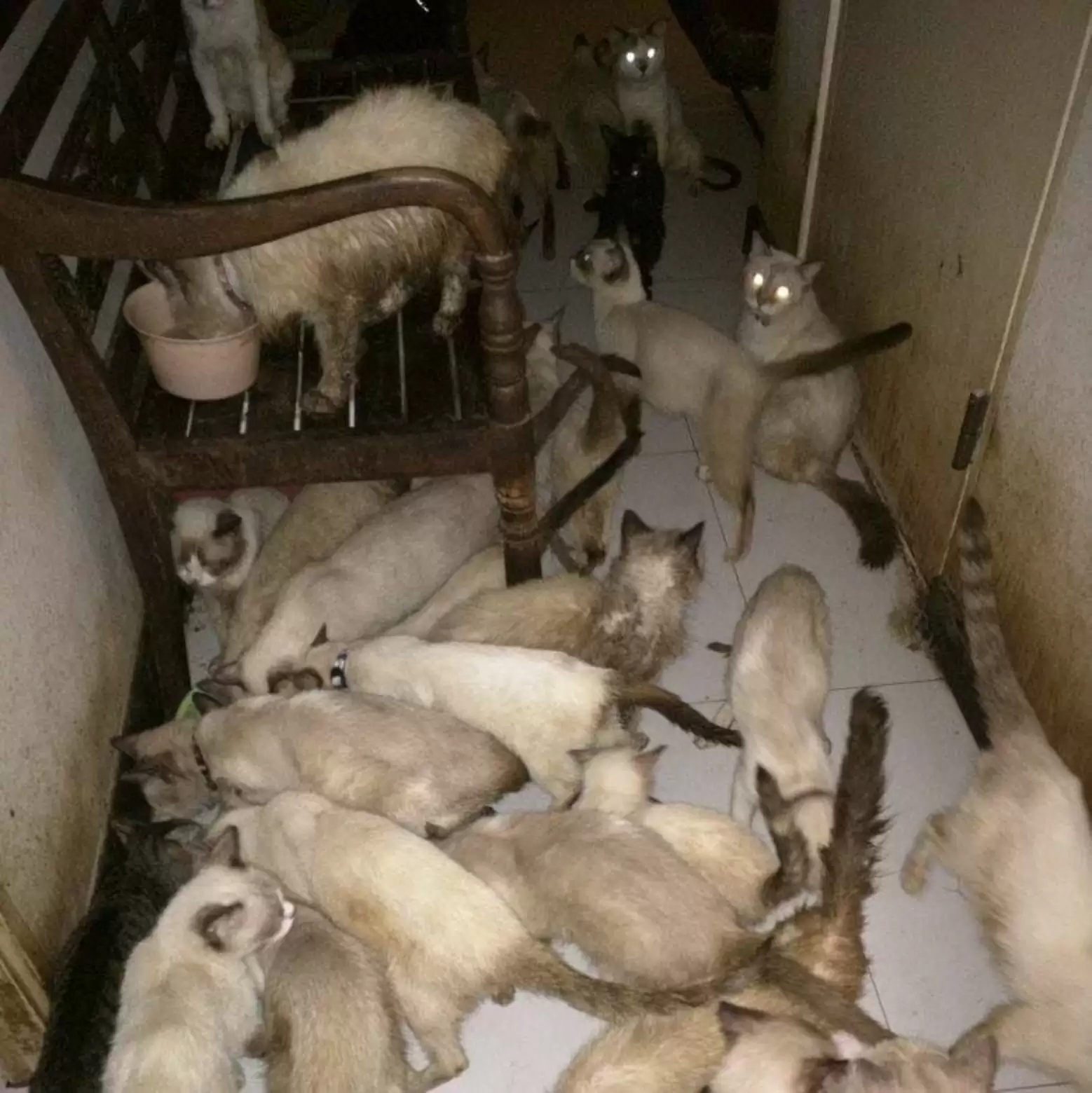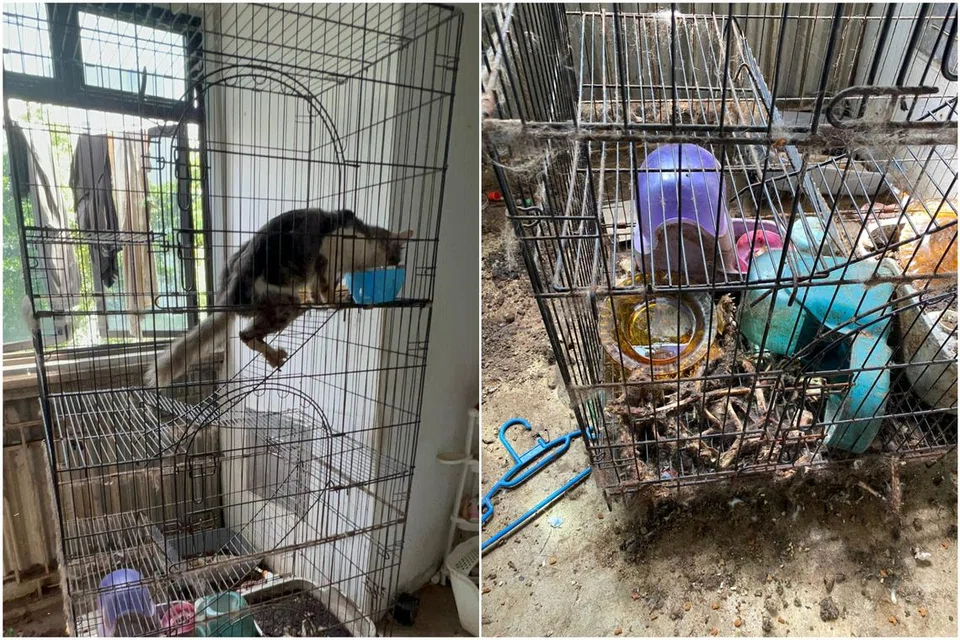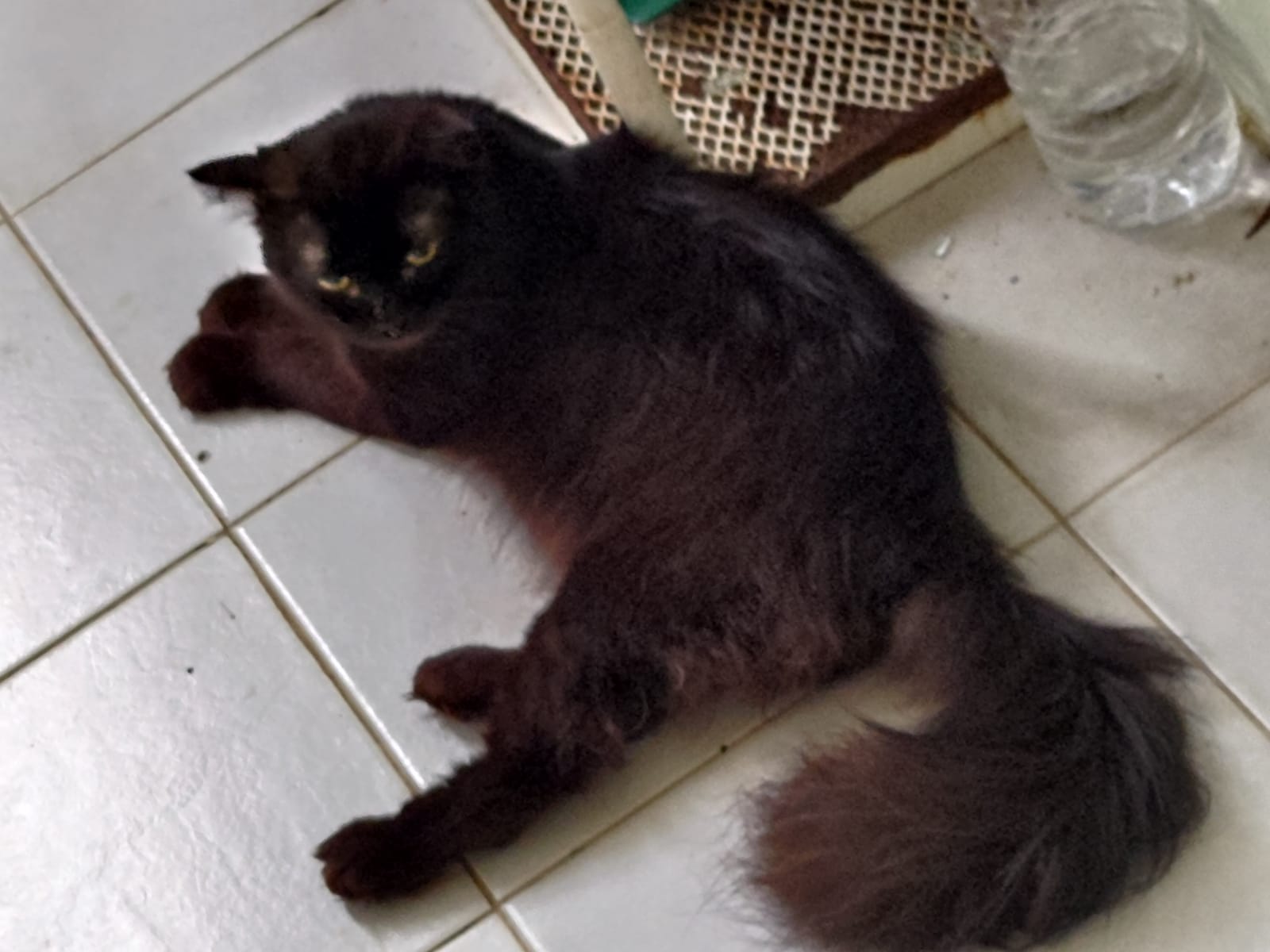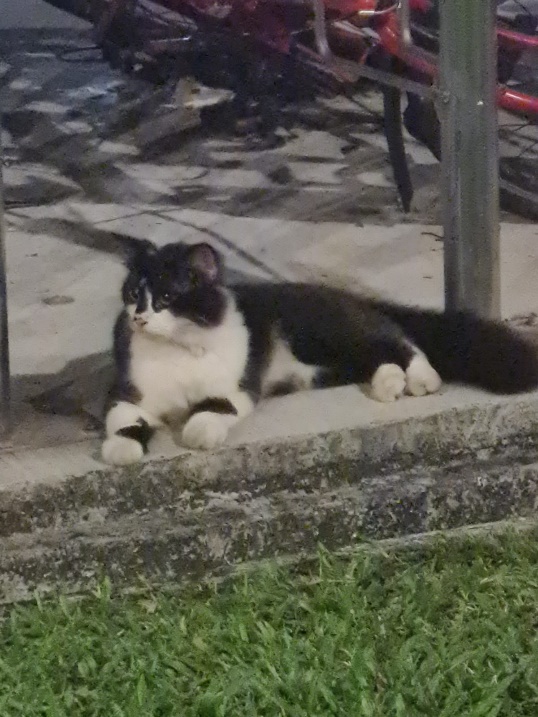
Prologue – The Arithmetic of Abandonment
Stray cats are not a naturally occurring population. They are the end result of human decisions.
A healthy, unsterilised female cat can come into heat several times a year and give birth up to three times annually, with an average of four to six kittens per litter. Though they are still kittens themselves until four or five years old, their bodies are capable of breeding at just three to four months. It isn’t maturity — it’s biology without mercy. When left unchecked, these young females are often mounted by their own siblings or nearby males, and the cycle repeats. In less than a year, two cats can become a hundred.
Even allowing for natural losses, that single cat and her offspring can, in a few short years, produce dozens of surviving animals if no one intervenes.
Scale that across a city where:
- people “rescue” but do not sterilise,
- backyard breeding is treated as pocket money,
- abandoned pets are left to reproduce in corridors, car parks, and vacant units,
and the numbers stop being theoretical. They turn into hoarding calls, cruelty investigations, shelter overload, and neighbourhood conflicts.
The pattern is consistent: these cats are made, not born this way. They begin as owned pets, impulse purchases, backyard litters, or “temporary fosters” that were never fixed. What follows are not isolated horror stories, but predictable outcomes of unmanaged reproduction.
The following cases illustrate how quickly one household can become a crisis — and why responsible ownership and early sterilisation are non-negotiable.

Case One – “Save the Siameses” (Fernvale Link, Sengkang)
In 2017, officers and welfare groups entered a three-room flat in Fernvale Link after neighbour complaints over smell and noise. Inside, they found over ninety cats confined in a small public housing unit.
The situation did not start with malice. It began, according to reports, with a pair of Siamese cats and an owner who took in more unsterilised animals over time. None were fixed. Litters came in waves. Kittens grew into adults and bred again. Within a few years, one home held the genetic echo of a handful of original cats.
Conditions had collapsed — strong ammonia fumes, overcrowding, untreated illnesses (eye infections, flu, skin disease), and inbreeding effects visible in some of the cats.
Rescuers, independent fosterers, and animal welfare groups mobilised under what became known publicly as “Save the Siameses.” Cats were removed in stages, sterilised, treated, and rehomed where possible. It was one of Singapore’s largest recorded home-based cat hoarding cases (The Straits Times, 7 Mar 2017 | Today Online, 7 Mar 2017, The Dodo).
Key lessons repeatedly cited by those involved:
- Hoarding often starts with genuine sympathy, then slides into denial and secrecy.
- Without sterilisation, even a small “rescue” can become unmanageable.
- Early reporting and structured support are critical; waiting until the smell seeps into the corridor is too late.
This case is now frequently referenced in local advocacy as a clear example of how failure to sterilise and set limits turns one act of kindness into systemic neglect.
References:

Case Two – The Boon Lay Flat
Several years later, a different flat told a similar story.
In Boon Lay, authorities and rescuers entered another HDB unit after ongoing complaints. Inside were dozens of cats (media reports placed the figure in the mid-40s), living in:
- heavy faecal and urine contamination,
- poor ventilation,
- overcrowded, stressful conditions.
Again, the pattern was familiar. The occupant had taken in cats over time and had not sterilised consistently. Pregnant cats and young kittens were found alongside adults; many showed signs of respiratory illness or poor nutrition. What may have started as “helping strays” or “saving unwanted pets” had become a closed ecosystem of suffering.
For rescuers on the ground, the Boon Lay case underscored three hard truths:
- Volume hides behind doors. From the outside, a unit looks normal; inside, there can be forty animals no one sees.
- Neighbours hesitate to report. People worry about conflict, stigma, or “getting someone into trouble,” so they delay until conditions are extreme. That delay costs lives.
- There is no substitute for sterilisation. Food without neutering simply fuels exponential growth indoors.
The cats removed from Boon Lay required coordinated veterinary care, quarantine, and fostering — stretched across already burdened networks. Many could be saved. Some could not.
The case stands as a concrete, documented example of how overbreeding plus isolation creates harm, even in a regulated housing environment.
References:
AsiaOne

Case Three – Jalan Minyak Flat
In June 2023, rescuers responding to neighbour complaints entered a rental flat along Jalan Minyak. Inside a single cage were two living cats and the skeletal remains of three others.
The surviving cats were emaciated, dehydrated, and pacing in panic. Beneath them lay bones still tufted with fur — evidence that their companions had starved where they stood. Rescuers estimated the cats had been left unattended for over a month (The Straits Times, 6 Jun 2023).
The case shocked even seasoned welfare volunteers. It was not malice, they said, but abandonment compounded by silence — a door no one opened until it was too late.
References:



Photo Credits: Cat’s Hope, DAE Publishing House
Case Four – York Hill Persians
York Hill did not make headlines, but it belongs in the same conversation. A small group of pedigree and mixed-breed cats had been locked in an apartment without food, water, or ventilation, left to fend for themselves in unsanitary conditions amid filth and neglect.
The smell from the unit hit us the moment we stepped out of the lift. As we approached the apartment, we saw that urine had flowed out into the corridor. Inside, the scene was devastating — emaciated, starving cats, empty bowls, and a heavy, airless silence. For me, this case is personal; I was among the volunteers on the scene, and I led the rescue.
When we first pried the door open, we didn’t go in right away. The stench was overwhelming — the kind that clings to your hair and clothes. In the half-dark, we saw movement: tiny shapes climbing up the metal gate, their claws catching in the mesh. There were so many of them — mostly black-and-white tuxedo kittens — trying to reach the light and the sound of voices. They had been starving, yet still alive enough to climb, to hope that someone would come.
The case involved fourteen cats. Among the surviving eleven were a motley-colored Persian female actively nursing, one motley Persian kitten about five weeks old, and a litter of five black-and-white tuxedo kittens believed to be Ragamuffin–Persian crosses. The nursing mother suffered from an eye infection and was later diagnosed with a urinary tract infection. Among the others were a beautiful Siamese–Persian mix, several Persians, and one short-haired cat.
One adult Tonkinese (a brown Siamese) had already died in the apartment, its body removed shortly before our arrival. Two of the fourteen cats had escaped some weeks earlier — one of them found brutally killed by a cat-hater in the neighbourhood just days before the rescue. Residents who knew me as a community caregiver sent me photos of the scene. It was clear from the injuries that the cat had been tortured before its death. I had fed and held that cat only days before — a black-and-white Ragamuffin–Persian, barely a year and a half old. Remembering it still brings tears. My only comfort is knowing that I managed to rescue the remaining eleven cats from that apartment.
They had no fresh air inside that flat. All of them crowded against the front door — it was the only place where air seeped in from the corridor gap below. That was where they urinated, and over time, the waste pooled and flowed out into the common passageway. It was the smell that finally drew attention. Neighbours began to complain, and that led my informants to alert me to what was happening inside.
During the two months that followed, as I went in and out each day to feed the last two surviving cats, tension in the block grew. One morning, as I arrived with food, an elderly neighbour suddenly sprayed me with a can of Baygon. I had to rush home to shower, then call the police to intervene. I didn’t press charges — it was an old couple, frightened and angry, and I understood they just needed somewhere to vent their frustration.
When the police arrived, I had to ask them to explain on my behalf. I couldn’t speak conversational Chinese, and the neighbours couldn’t understand me. The officers told them I was a volunteer — that I had the letter of authorisation and legal custody of the cats, and that my only task was to feed them until foster care became available. I had no power to enter the flat for cleaning or to repair what had already decayed. All I could do was keep the cats alive until help arrived.
That morning stayed with me. It showed how quickly compassion can be mistaken for nuisance, and how cruelty doesn’t always end at the abuser’s door. Sometimes, it spills into the corridor, onto the rescuer, and into the air we all breathe.
Of the eleven rescued, nine were moved to foster care and later rehomed. One of the remaining two was severely traumatised by the violence it had witnessed in the household. It feared men — especially those wearing glasses and singlets. For two months, I visited the unit twice a day to feed and befriend these two cats before finally managing to trap them. I took them home for rehabilitation. It took months before the traumatised cat began to trust again. We call him Sweetie Romeo. He remains with me still — one of fifteen rescued cats who found sanctuary here.
This case was documented through firsthand rescue accounts, not through public prosecution records. Therefore, it is presented with care and without speculation:
- Pedigree-type cats were kept unsterilised and allowed to breed unchecked.
- When circumstances changed — financially or personally — the animals were left vulnerable.
York Hill is the quieter face of the same equation seen in Fernvale and Boon Lay: cats multiply, resources don’t, and the weakest pay first.

Kitty managed to escape the filthy unit, only to be brutally killed. I held him in my arms just days before the rescue.


Sweetie Romeo would scale up the kitchen windows when we approached. It took several months before we could befriend him and trap him. And even after that he would still scale up the kitchen windows and onto the bamboo rafters in his foster environment. The yellow stains on his underside are pee stains. The vet helped us shave the area when he was under anesthesia for sterilization. This allowed new fur to grow back without the yellow stains.
Case Five – – Tyne and Wear, UK (RSPCA, 107 Cats)
In 2025, the RSPCA removed 107 cats from a single property in Tyne and Wear, after the owner — who started with a small number of unneutered cats — became completely overwhelmed. What began with just six cats expanded into more than a hundred, a living example of what happens when animals are not sterilised and litters are allowed to continue unchecked.
Officers found cats of varying ages crowded indoors, many needing dental treatment, neutering, and basic medical care. Some were too unwell to survive, but most were eventually rehabilitated and rehomed with RSPCA support. The RSPCA highlighted this case publicly as a warning: unfixed cats plus “good intentions” can spiral into large-scale neglect within a few breeding cycles.
Reference:
Case Six – Monmouth County, New Jersey, USA
(“20 Cats Dumped – 30 More Found”)
In Monmouth County, New Jersey, a case known as “20 Cats Dumped – 30 More Found” shows how quickly numbers explode when no one sterilises or steps in early. On a cold morning, shelter staff arrived to find 20 cats in crates abandoned outside the Monmouth County SPCA before opening hours — all were unneutered males. Monmouth County SPCA
Suspecting more animals were involved, Humane Law Enforcement followed up at the address linked to the drop-off. Inside an unoccupied house, they discovered around 30 additional cats living in filthy, feces- and urine-soaked conditions. Every surface was contaminated; officers had to wear full Tyvek suits to recover them safely. In total, 50 cats were taken into care. Monmouth County SPCA
The cats were underweight, dirty, scraped up, and entire (unsterilised). They were vaccinated, neutered, treated, and slowly rehomed. The case was not framed as deliberate sadism, but as prolonged neglect and uncontrolled breeding — a textbook example of how “just a few intact cats” can turn into dozens of lives in crisis.
Empathic overload, denial, lack of sterilisation — the same pattern, a different continent. The math does not care about borders.
Reference:
The Global Thread
From Sengkang to Boon Lay, York Hill to Lincolnshire and New Jersey, the pattern repeats with mathematical cruelty. Every city that permits unsterilised cats and unregulated breeding eventually faces the same outcomes: shelter overflow, disease cycles, and public fatigue.
Global estimates suggest hundreds of millions of cats worldwide, among them many unowned or semi-owned. A widely cited figure is around 600 million domestic cats globally, though stray and feral populations are even harder to count. In regions without sterilisation requirements, populations grow rapidly.
The problem isn’t feral biology – it’s human inaction. Each case tells the same story in different accents: love without limits becomes neglect without intent. Until education, enforcement, and affordable sterilisation work together, compassion alone will keep breeding suffering.
References:
The International Fund for Animal Welfare (IFAW) page states: “Overall, there are an estimated 600 million cats worldwide.”
A 2020 paper titled “Global Strategies for Population Management of Domestic Cats” quotes an estimate of around 600 million domestic cats worldwide (2009 figure) by Dauphiné & Cooper.
Several popular-media compilations reference the figure “600 million to 1 billion cats globally” (including stray/feral and pet).
The Quiet Rebuild – Cats Hope
From the wreckage of these stories emerges a simpler vision — one of prevention, compassion, and shared responsibility.
Cats Hope, the rescue arm supported by Digital Assets Ecommerce (DAE), channels proceeds from its books, merchandise, and campaigns into self-funded charitable work.
We pioneer sustainable solutions that uplift both humans and animals — funding medical care, food drops, and community grants that empower fosterers, caregivers, and pet owners to keep families whole and thriving.
In a world where strays are made by human hands, hope can be made too — deliberately, patiently, one life at a time.

“Help rewrite more stories like these.”
Join our newsletter, support our campaigns, or become a foster sponsor.
